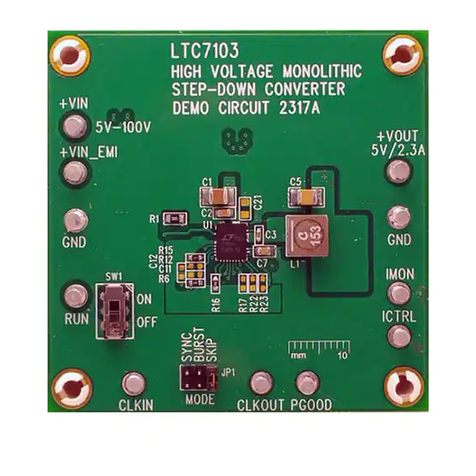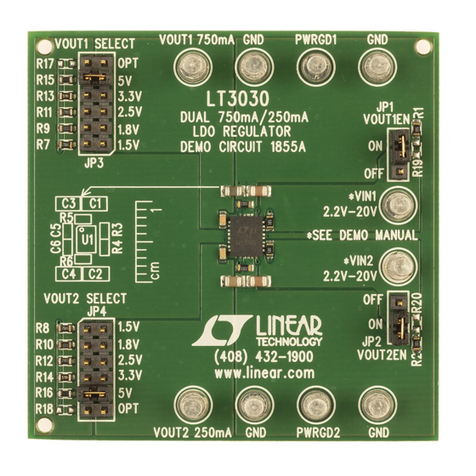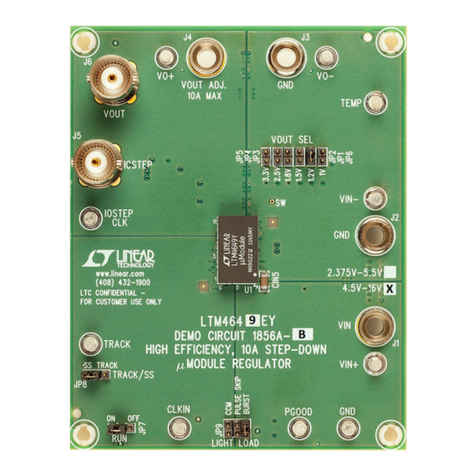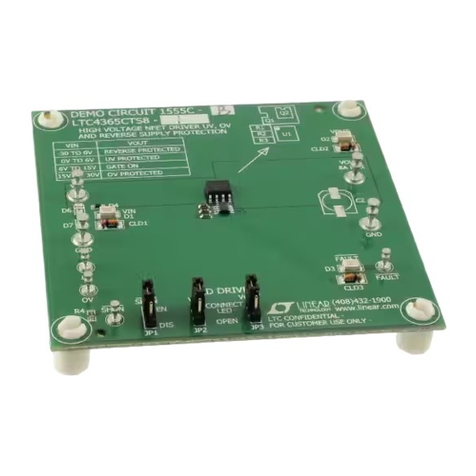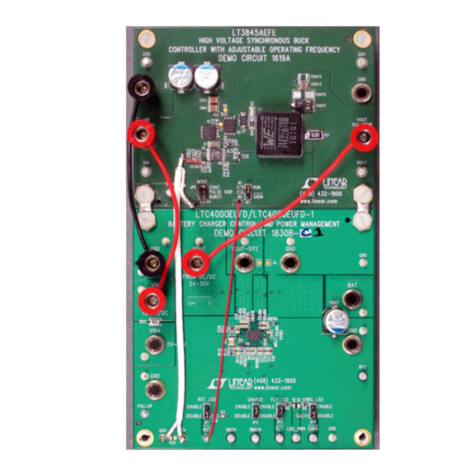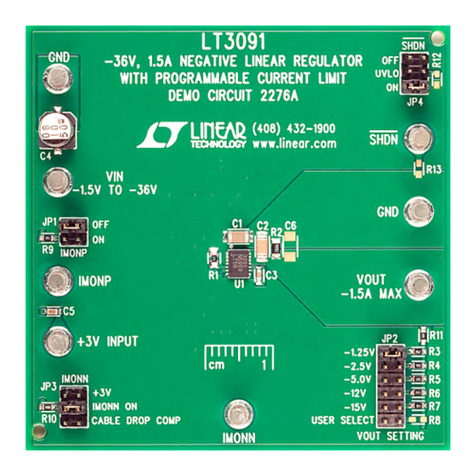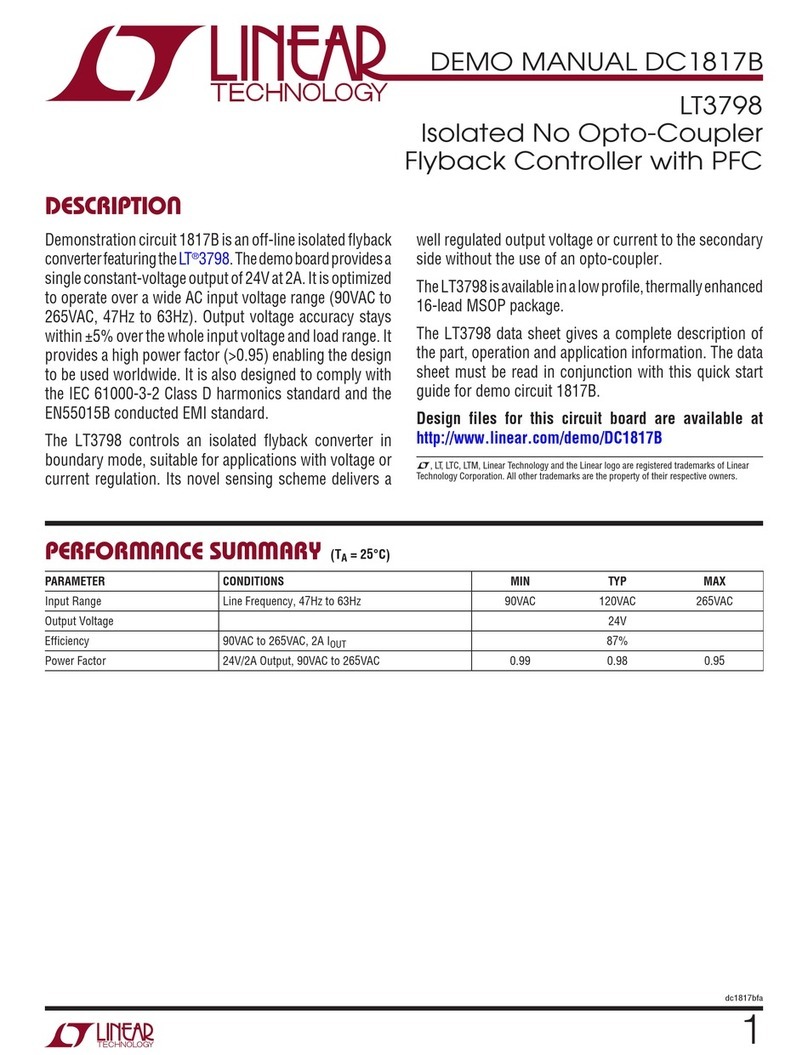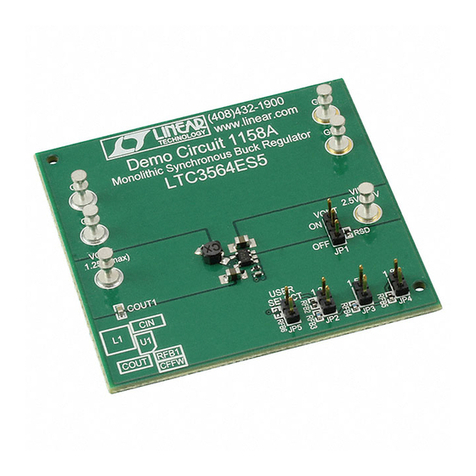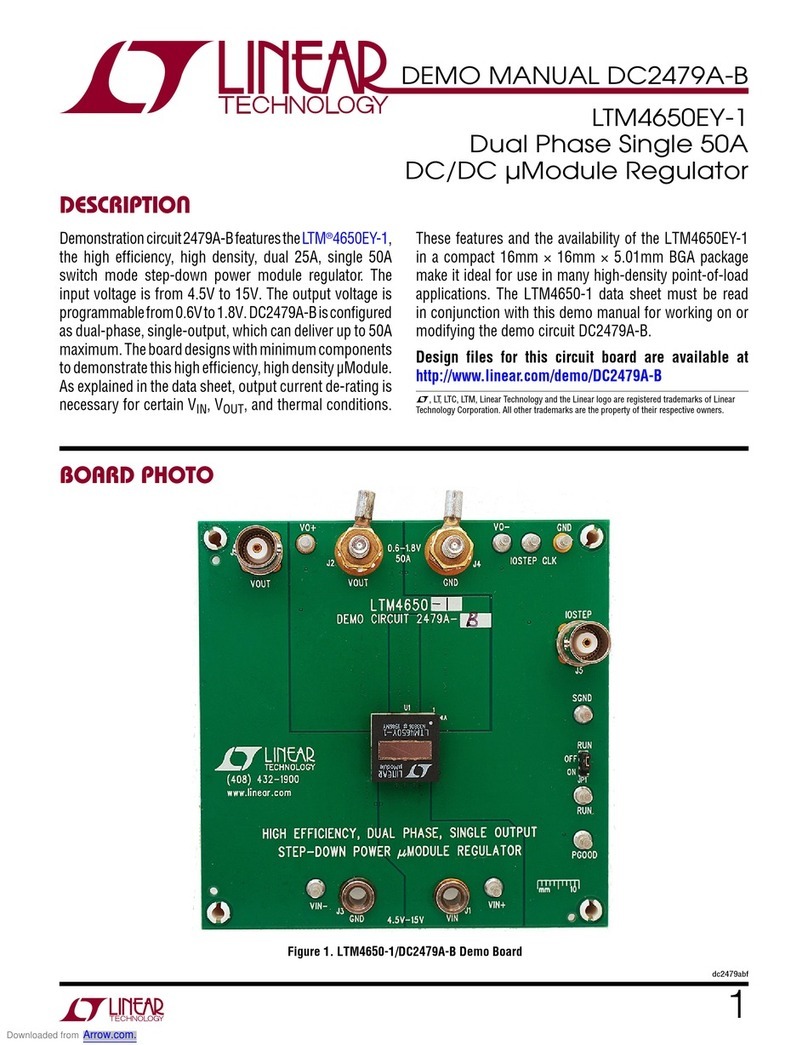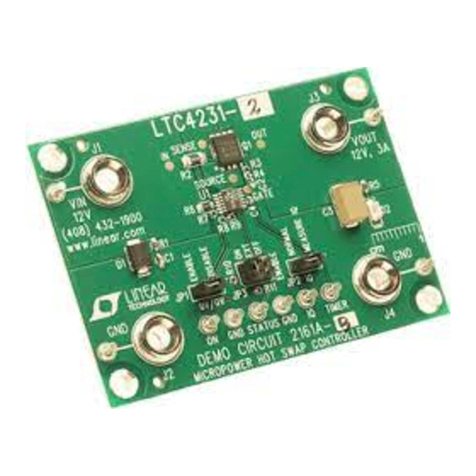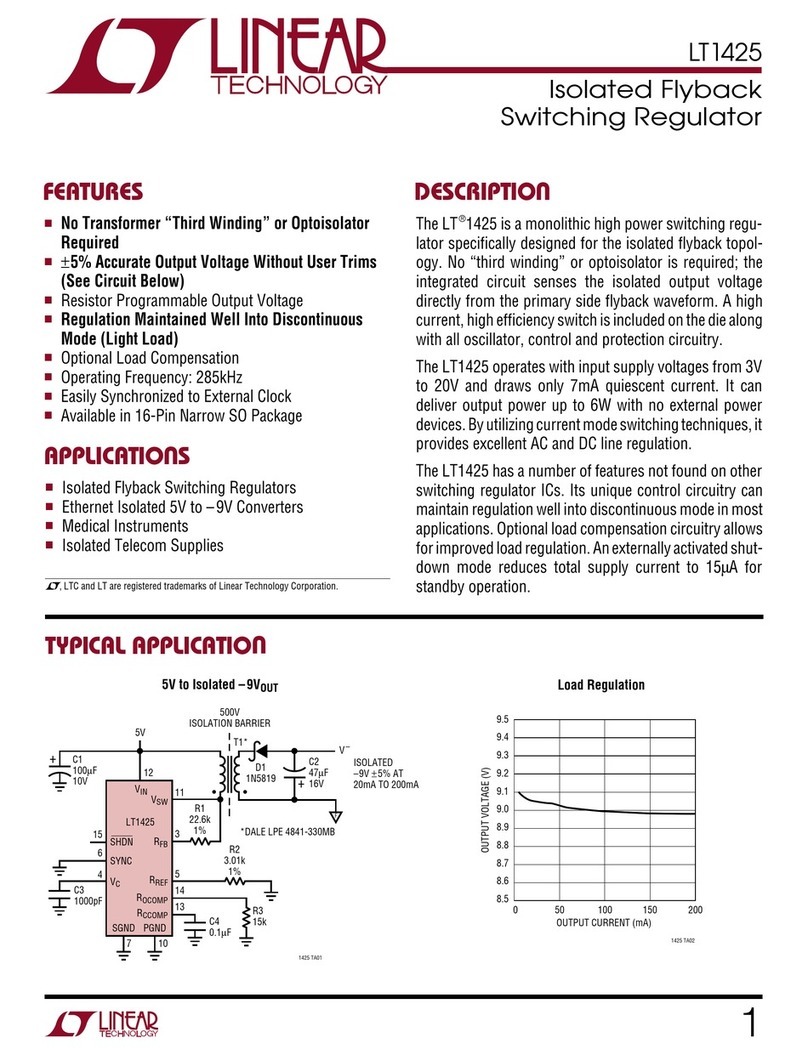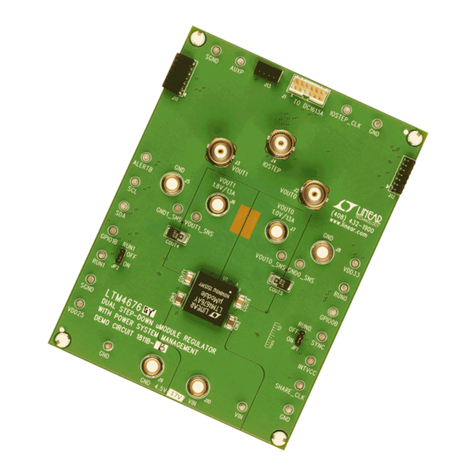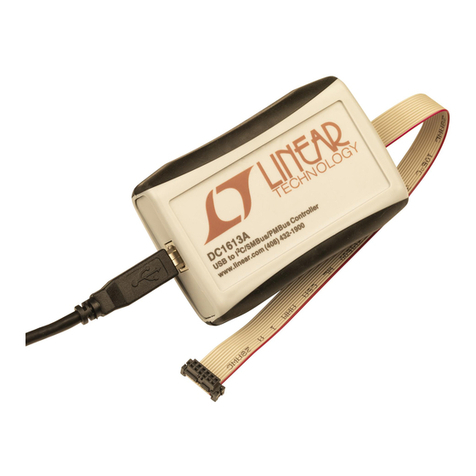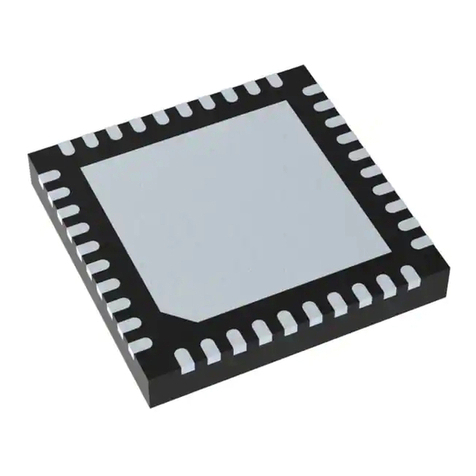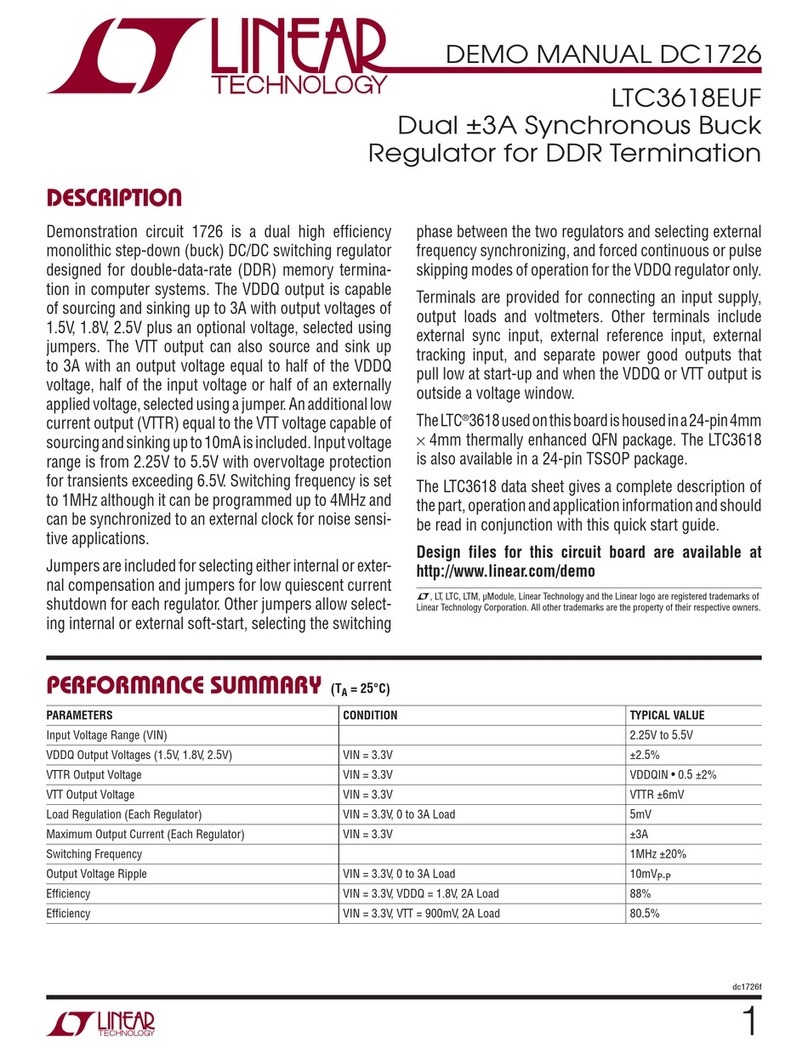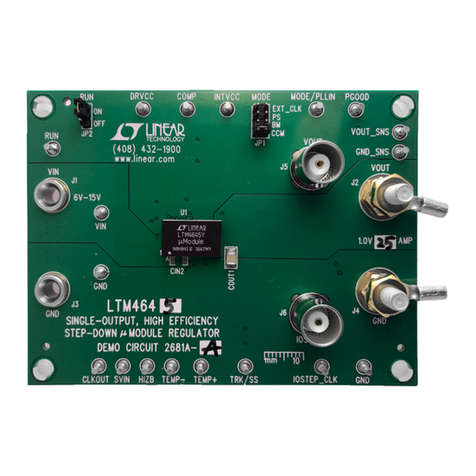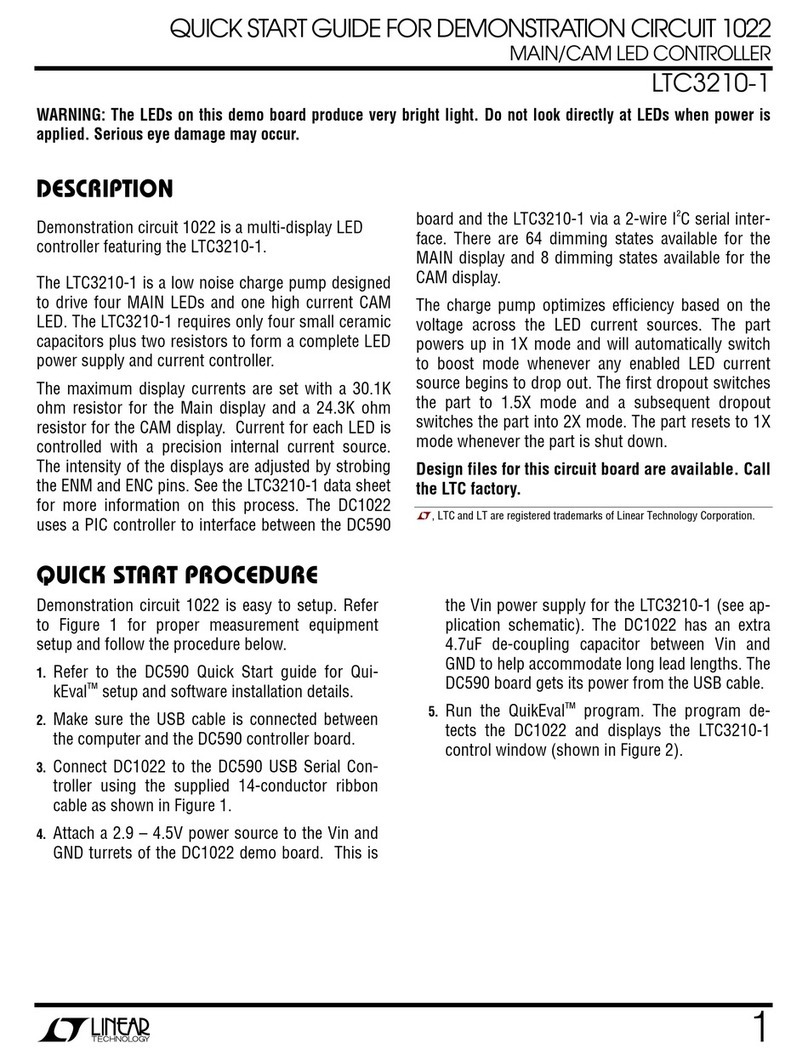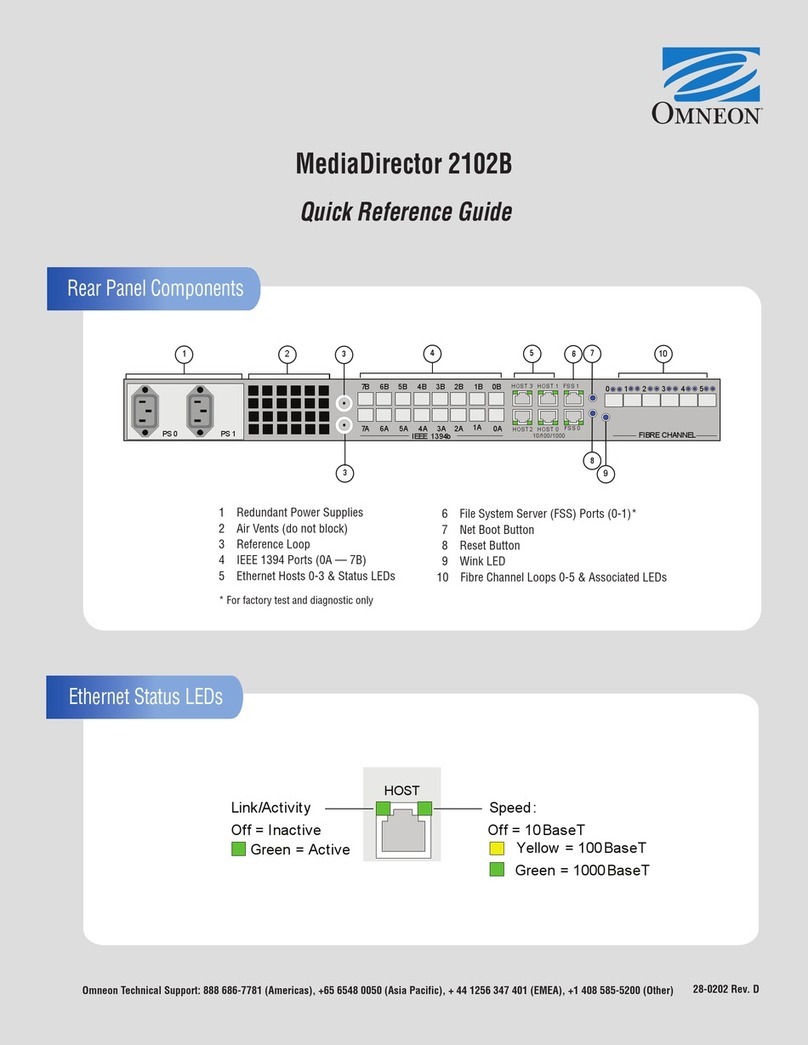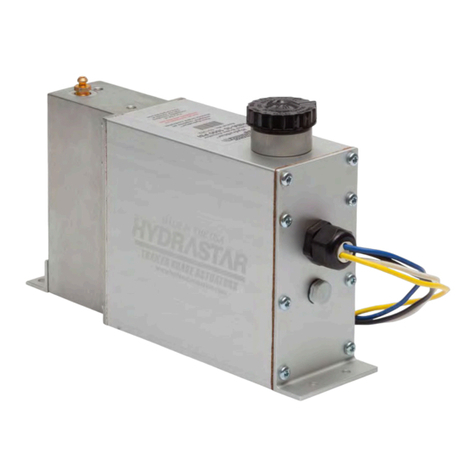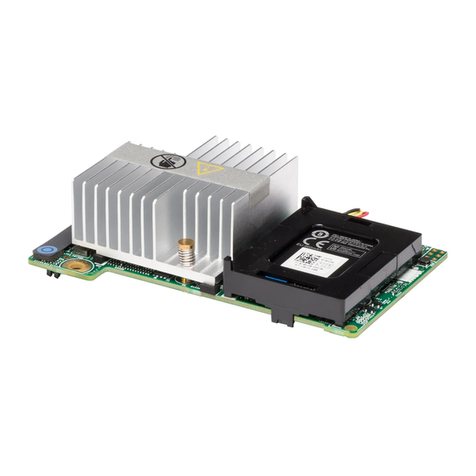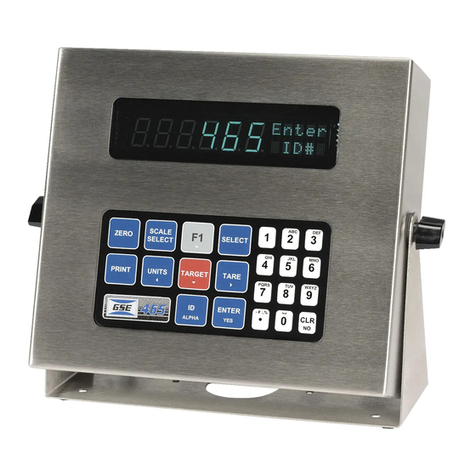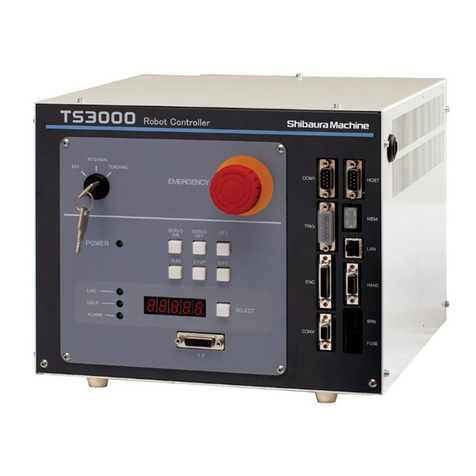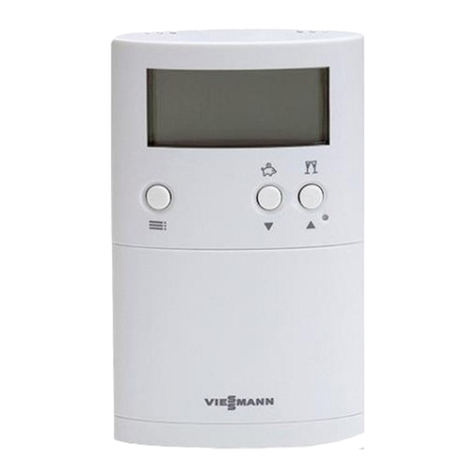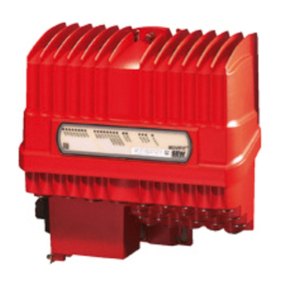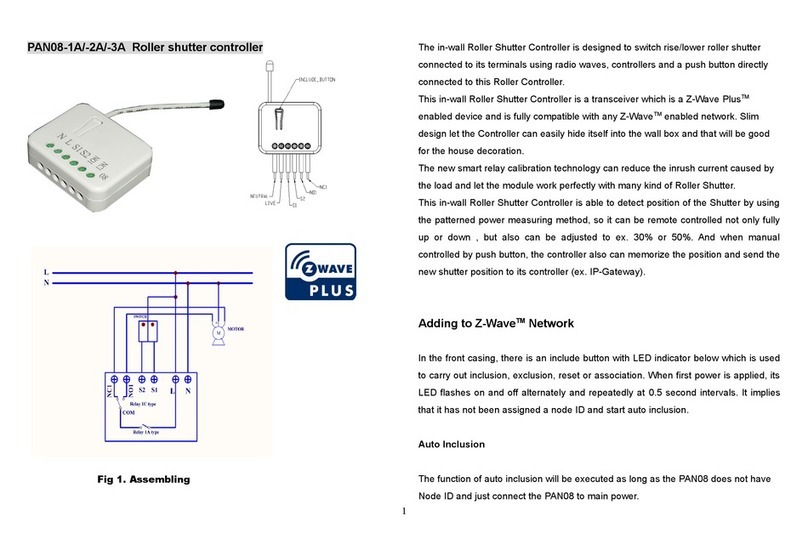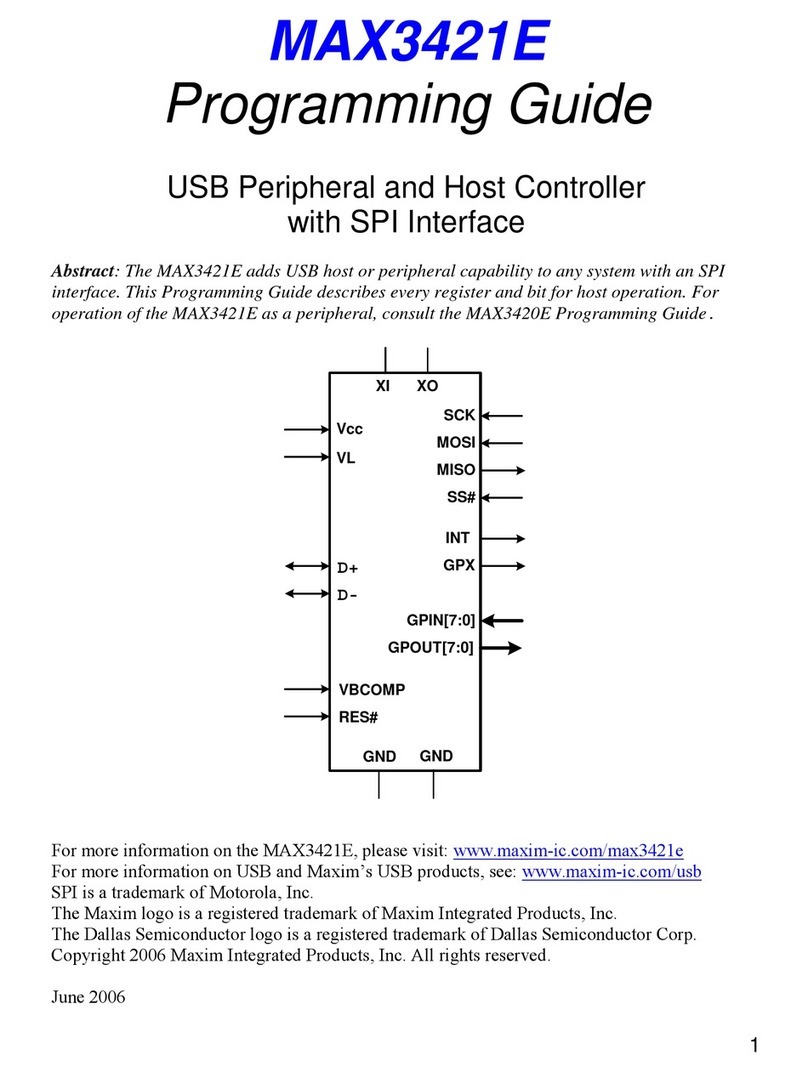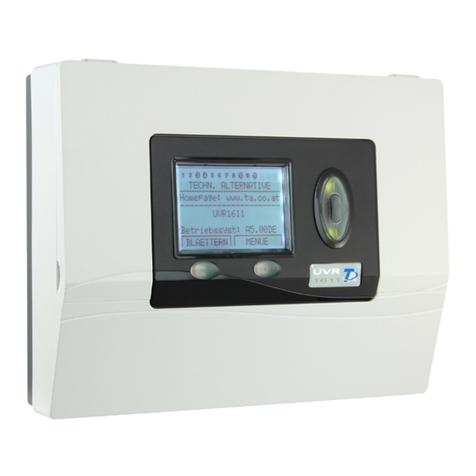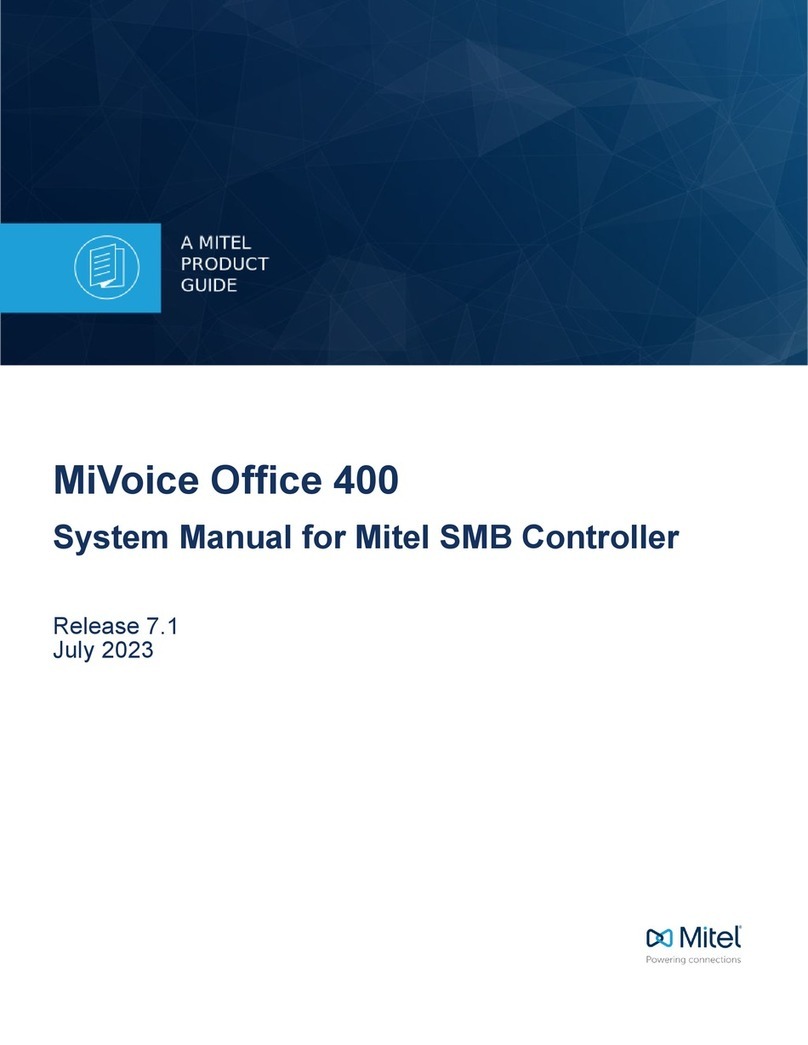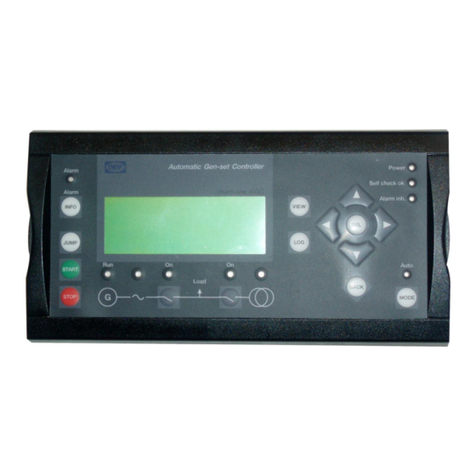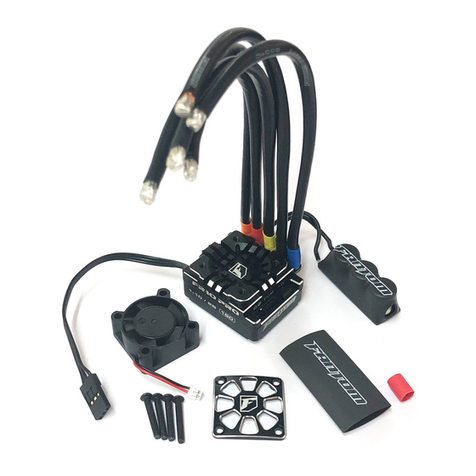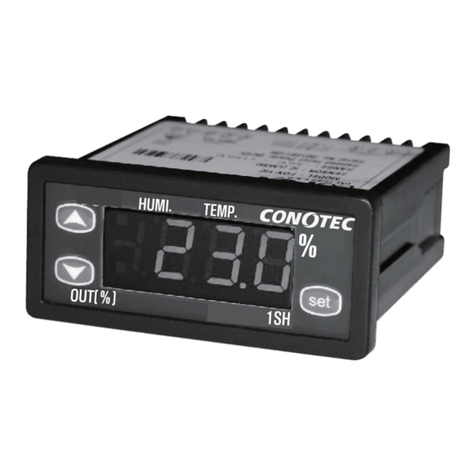
LTM4636
7
4636f
For more information www.linear.com/LTM4636
pin FuncTions
VOUT (A1-A12, B1-B12,C1-C12,D1-D2,D11-D12):Power
OutputPins. Applyoutputloadbetweenthese pinsandGND
pins. Recommend placing output decoupling capacitance
between these pins and GND pins. Review Table 4.
MODE_PLLIN (H3): Forced Continuous Mode, BurstMode
Operation, or Pulse-Skipping Mode Selection Pin and
External Synchronization Input to Phase Detector Pin.
Connect this pin to INTVCC to enable pulse-skipping mode
ofoperation.Connecttogroundtoenable forcedcontinuous
modeofoperation.Floating this pin will enable BurstMode
operation. A clock on this pin will enable synchronization
with forced continuous operation. See the Applications
Information section.
VOUTS1–(D3): VOUT Sense Ground for the Remote Sense
Amplifier. This pin connects to the ground remote sense
point. Connect to ground when not used. See the Applica-
tions Information section.
VOUTS1+(D4): This pin should connect to VOUT and is
connected to VFB through a 4.99k resistor. This pin is
used to connect to a remote sense point of the load for
accurate voltage sensing. Either connect to remote sense
point or directly to VOUT. See the Applications Information
section for details.
COMPB(D5):Internal compensationnetworkprovidedthat
coincides with proper stability utilizing the values in Table
5. Just connect this pin to COMPA for internal compensa-
tion. In parallel operation with other LTM4636 devices,
connect COMPA and COMPB pins together for internal
compensation, then connect all COMPA pins together.
GND (D6-D10, E6-E10, E12, F7, F8, F10-F12, G1-G2, G6
G10, H1, H10-H12, J1-J3, J8-J12, K1-K3, K9-K10, K12,
L1-L3, L9-L10, L12, M1-M3, M9-M12): Ground Pins for
Both Input and Output Returns.
PGOOD (E1): OutputVoltagePowerGood Indicator. Open-
drain logic output is pulled to ground when the output
voltage exceeds a ±7.5% regulation window.
RUNC (E2): Run Control Pin. A voltage above 1.35V will
turn on the control section of the module. A 10k resistor
to ground is internal to the module for setting the RUN
pin threshold with a resistor to 5V, and allowing a pull-
up resistor to PVCC for enabling the device. See Figure 1
Block Diagram.
TRACK/SS(E3): OutputVoltageTracking PinandSoft-Start
Inputs. The pin has a 1.25µA pull-up current source. A
capacitor from this pin to ground will set a soft-start ramp
rate. In tracking, the regulator output can be tracked to a
differentvoltage. Thedifferentvoltage isapplied toavoltage
divider then to the slave output’s track pin. This voltage
divider is equal to the slave output’s feedback divider for
coincidental tracking. Default soft-start of 750µs with
TRACK/SS pin connected to INTVCC pin. See the Applica-
tions Information section. In PolyPhase
®
applications tie
the TRACK/SS pins together.
VFB (E4): The Negative Input of the Error Amplifier. Inter-
nally,this pin isconnectedto VOUTS1witha4.99k precision
resistor. Different output voltages can be programmed
with an additional resistor between VFB and VOUTS1–. In
PolyPhaseoperation,tying the VFB pins togetherallowsfor
paralleloperation. SeetheApplicationsInformation section.
COMPA (E5):CurrentControlThresholdandErrorAmplifier
Compensation Point. The current comparator threshold
increases with this control voltage. Tie all COMPA pins
together for parallel operation. This pin allows external
compensation. See the Applications Information section.
SNSP2 (F1): Current Sense Signal Path. Connect this pin
to SNSP1 (F2).
SNSP1 (F2): Current Sense Signal Path. Connect this pin
to SNSP2 (F1). Both pins are used to calibrate current
sense matching and current limit at final test.
HIZREG (F3): When this pin is pulled low the power stage
is disabled into high impedance. Tie this pin to VIN or in
TVCC for normal operation.
PACKAGE ROW AND COLUMN LABELING M AY VARY
AMONG µModule PRODUCTS. REVIEW EACH PACKAGE
LAYOUT CAREFULLY.





















